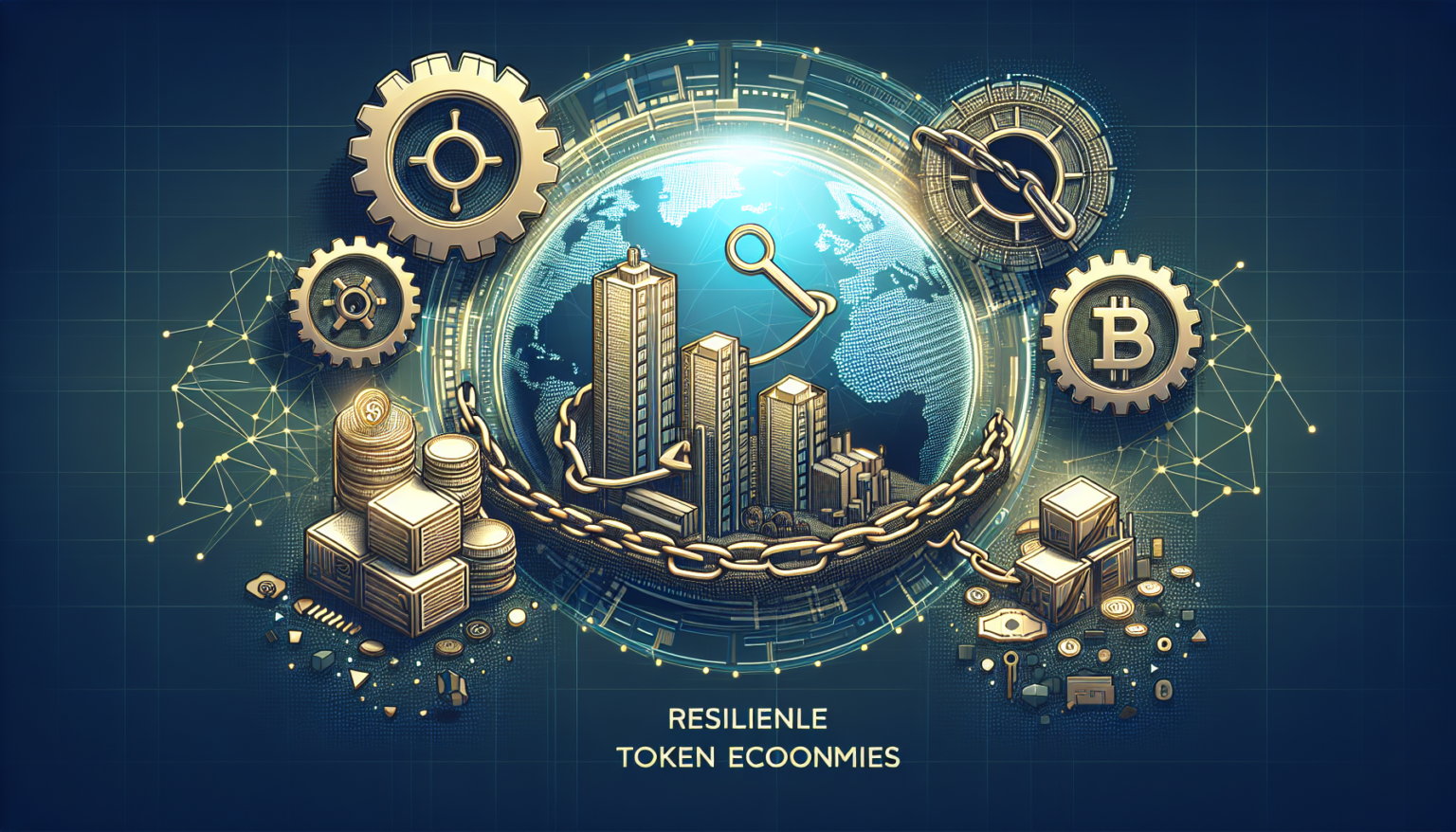Understanding Token Economies in DeFi
What is a Token Economy?
A token economy refers to an ecosystem where digital tokens are utilized as a medium of exchange, a unit of account, or a store of value. In decentralized finance (DeFi), these tokens are often linked to various financial instruments, allowing users to participate in a wide range of activities such as lending, borrowing, and trading. The structure and governance of these token economies can significantly impact their resilience and sustainability.
Why Resilience is Key
When we talk about resilience in the context of token economies, we mean the ability to withstand shocks and stresses—whether from market volatility, regulatory changes, or technological defects. A resilient token economy can adapt, evolve, and thrive even in the midst of challenges.
Key Elements that Foster Resilient Token Economies
1. Robust Governance Models
The Role of Decentralized Governance
Decentralized governance plays a crucial role in the success of token economies. Projects like MakerDAO illustrate how a decentralized governance model can empower token holders to influence decisions. By allowing community members to vote on proposals, such as changes to collateralization rates or governance parameters, these projects can adapt swiftly to changing market conditions.
Incentivizing Participation
Incentive mechanisms that reward active participation are vital. Successful projects often distribute tokens to users for providing liquidity, participating in governance, or other valuable contributions. For instance, Uniswap creates a motivating environment by rewarding liquidity providers with governance tokens, encouraging them to engage more deeply in the ecosystem.
2. Incentive Alignments
Creating Harmony Between Users and the Protocol
For a token economy to be resilient, incentives must be aligned among all participants. This means that the economic incentives for users, liquidity providers, and developers should work in tandem. Projects like Curve Finance exemplify this by offering liquidity providers rewards that correlate directly with the usage and growth of the platform, promoting a thriving ecosystem.
Long-term Incentives Over Short-term Gains
While immediate rewards may attract users, long-term incentives ensure sustained growth. Programs such as vesting schedules for tokens prevent quick sell-offs and promote long-term commitment. A clear example is the tokenomics of Yearn.Finance, where rewards are structured in a way that encourages users to keep their assets within the ecosystem rather than cashing in during market highs.
3. Liquidity and Utility
The Lifeblood of Token Economies
Liquidity is fundamental for any token economy. It allows users to easily buy and sell tokens without causing significant price fluctuations. Projects like SushiSwap have focused on enhancing liquidity through liquidity mining programs, providing users with incentives to contribute liquidity to the platform.
Utility Beyond Transactions
A token must have utility that goes beyond mere transactions to ensure resilience. The more ways a token can be used within its ecosystem—be it for governance, staking, or accessing unique services—the more resilient the token economy becomes. A great example is Aave, whose token allows holders to participate in governance and earn rewards through staking, providing multiple avenues for utility.
4. Risk Management Strategies
Creating Safety Nets
One of the lessons learned from various DeFi projects is the importance of risk management. Projects that have implemented effective risk management strategies often emerge stronger. For instance, protocols like Nexus Mutual provide insurance against smart contract failures, thus offering a level of protection that can enhance user trust and project resilience.
Education and Transparency
Educating users on risks and offering clear information about the mechanics of the token economy can lead to better decision-making. Transparency builds trust, which in turn fosters a resilient ecosystem. Projects focusing on community education often see more engaged users and, subsequently, a more stable token economy.
Learning from Leading DeFi Projects
1. MakerDAO’s Stability through Collateralization
MakerDAO has maintained stability by requiring over-collateralization. Users must lock up more value than the amount they are borrowing in the form of DAI. This model not only promotes stability but also creates a safety net in situations where market conditions become unfavorable, ensuring the resilience of the token economy.
2. Aave’s Innovation with v2 and v3 Protocols
Aave’s continuous innovations through the deployment of v2 and v3 protocols demonstrate how adaptability is key to resilience. By allowing users to customize their lending experience and offering features like portable liquidity, Aave remains competitive and relevant in the constantly evolving DeFi space.
3. Synthetix and Synthetic Assets
Synthetix thrives as a token economy by creating synthetic assets that mimic real-world assets. This opens up new avenues for traders and brings more participants into the ecosystem. The resilience of Synthetix lies in its ability to offer diverse trading options, encouraging liquidity and active participation.
4. Balancer’s Flexible Liquidity Pools
Balancer allows users to create liquidity pools that can have multiple tokens with different weights. This flexibility offers liquidity providers a way to manage risk while still earning rewards. By catering to diverse trading strategies and risk tolerances, Balancer enhances the resilience of its token economy.
Future Directions for Resilient Token Economies
1. Embracing Interoperability
Interoperability between different DeFi projects can foster a more resilient token economy. By allowing tokens to move seamlessly between platforms, projects can enjoy increased liquidity and user engagement. Innovations such as cross-chain bridges and wrapped tokens could play a significant role in achieving this goal.
2. Regulatory Considerations
As regulatory scrutiny increases, token economies must adapt. Having a proactive approach to compliance can mitigate risks and enhance resilience. Projects that prioritize regulatory adherence may also attract institutional investors, bolstering their economies.
3. Fostering Community Engagement
Building a robust community around a token economy is vital. Engaging users not just as investors but as active participants can contribute to resilience. Community events, open forums, and development workshops are effective in sustaining long-term engagement.
In building resilient token economies, DeFi projects can take cues from these lessons and successes. By focusing on governance, alignment of incentives, liquidity, risk management, and community engagement, they can not only survive in the dynamic crypto landscape but also flourish.








